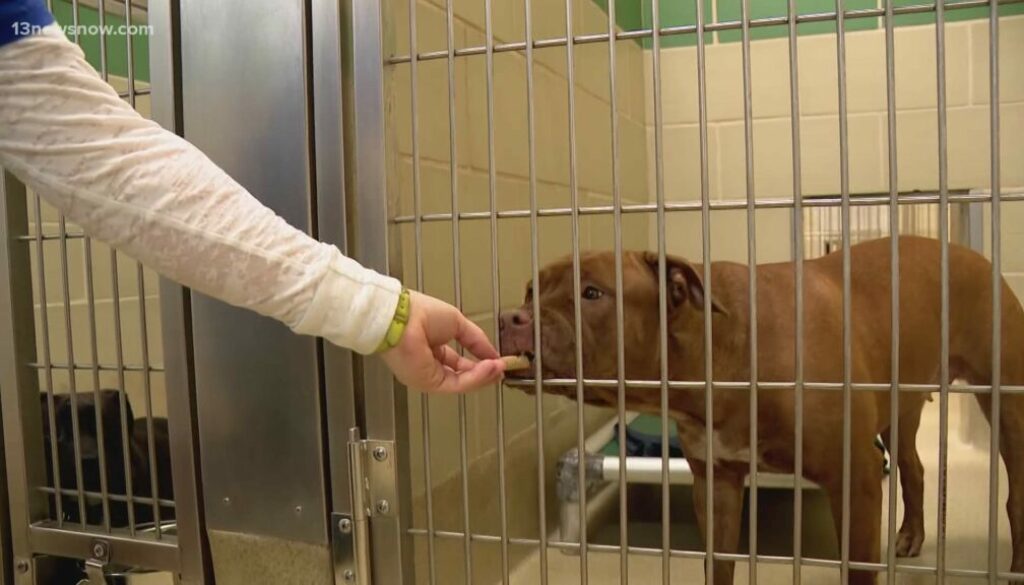The Role of Foster Homes in Pet Adoption Success
Foster homes play a crucial role in the success of pet adoption programs by providing temporary care, love, and support to animals in need. These homes serve as a stepping stone between shelter life and finding a forever home for these pets. This article explores the importance of foster homes in pet adoption and how they contribute to the overall success of such programs. Let’s delve into the various aspects of the role foster homes play in enhancing pet adoption rates and finding loving homes for animals in need.
Why are Foster Homes Important in Pet Adoption?
Providing a Safe and Comfortable Environment
Foster homes offer a secure and loving environment for pets that may have experienced trauma, neglect, or abuse. These homes act as a temporary sanctuary where animals can heal both physically and emotionally. By providing a calm and stress-free setting, foster parents ensure that pets can regain their trust in humans and develop a sense of security before transitioning to their forever homes.
Socializing and Training Opportunities
One of the key benefits of foster homes is the opportunity for pets to socialize and receive basic training. In a foster setting, animals get exposure to various stimuli, such as other pets, different people, and different environments. This helps them become well-rounded and adaptable, increasing their chances of successful integration into their future families.

Assessing the Pet’s Behavior and Needs
Living in a foster home allows pet behaviorists and shelter staff to gain a deeper understanding of a pet’s behavior, personality, and specific needs. By closely observing and interacting with the animal in a home environment, foster parents can provide valuable insights into the pet’s likes, dislikes, triggers, and any behavioral considerations. This information is crucial in finding the most suitable forever home for the pet.
Reducing Stress and Anxiety
The shelter environment can be overwhelming and stressful for many animals. Foster homes offer a respite from the noise, confinement, and constant presence of other stressed animals. By minimizing stress and anxiety levels, foster parents help pets recover faster, reduce the risks of developing shelter-related health issues, and increase their overall well-being.
How Do Foster Homes Impact Pet Adoption Success?
Increased Chances of Finding a Forever Home
Pets that have spent time in foster care are usually more appealing to potential adopters. They often have a better chance of finding a forever home thanks to the love, care, and socialization they receive in a foster home. By providing a nurturing environment that mimics a real home setting, foster parents can help pets showcase their true personalities and increase their adoptability.
Better Compatibility Between the Pet and Potential Adopters
Foster homes allow for a more accurate assessment of a pet’s compatibility with potential adopters. Foster parents can provide valuable information about the pet’s behavior, energy levels, and any specific requirements. This knowledge helps adoption agencies and shelters in screening potential adopters and ensuring successful matches that are more likely to result in long-lasting adoptions.
Decreased Shelter Overcrowding
By opening up the limited space available in animal shelters, foster homes help alleviate overcrowding issues. This, in turn, allows shelters to cater to more animals in need and provide better care to those that require specialized attention. With fewer animals in shelters, both the pets and the shelter staff can enjoy a less stressful environment, leading to better overall care and well-being.
Positive Word of Mouth and Adoption Referrals
Foster homes can act as ambassadors for pet adoption. When people witness the positive impact foster homes have on pets, they are more likely to consider adopting rather than purchasing from breeders or pet stores. Foster parents can share their experiences, spread awareness about the benefits of adoption, and make valuable adoption referrals, amplifying the reach and success of pet adoption programs.

The Benefits of Fostering for Individuals and Families
Emotional Fulfillment and Companionship
Fostering a pet can bring immense joy and emotional fulfillment to individuals and families. The bonds formed with the foster pet can be incredibly rewarding, providing a sense of companionship and purpose. It offers an opportunity to make a positive impact on an animal’s life and be a part of their journey towards finding a permanent loving home.
Learning Responsibility and Empathy
Fostering can be a valuable learning experience for individuals, especially children, as it teaches responsibility and empathy. It instills a sense of compassion and care for animals and helps individuals develop valuable life skills. Fostering also provides an opportunity for families to bond over shared responsibilities and experiences, creating lasting memories and teaching important life lessons.
Helping to Save Lives and Make a Difference
Foster homes directly contribute to saving lives by providing temporary care and love to pets in need. By opening their hearts and homes to these animals, foster parents become instrumental in the successful rehabilitation and adoption of pets that may have otherwise faced an uncertain fate. The feeling of making a difference in an animal’s life is incredibly gratifying and fulfilling.
Challenges and Considerations of Foster Homes
Addressing Time and Commitment Constraints
Fostering a pet requires a considerable amount of time and commitment. Pets in foster care need regular feeding, exercise, and grooming, as well as dedicated attention and socialization. Foster parents need to ensure they can dedicate sufficient time and effort to meet the needs of the foster pet, considering their existing work and family commitments.
Dealing with Potential Behavioral Issues
Some foster pets may exhibit behavioral issues due to previous traumatic experiences or lack of training. Foster parents must be prepared to handle and address these issues with patience, understanding, and appropriate training methods. It is essential to establish boundaries and provide consistent guidance to help the pet overcome these challenges and improve their chances of successful adoption.
Handling Attachment and Letting Go
Foster parents often develop strong emotional bonds with the pets they care for, making it difficult to say goodbye when the time for adoption comes. Letting go can be emotionally challenging, but it is necessary for the foster pet’s well-being and to make space for other pets in need. Foster parents need to prepare themselves for the inevitable separation and ensure they have the emotional support to cope with it.
Financial Implications of Fostering
While foster homes receive support from adoption agencies and shelters, foster parents may still need to cover certain expenses related to the pet’s care. These expenses may include food, grooming, basic supplies, and sometimes veterinary costs. Individuals considering fostering should assess their financial capability and determine if they can comfortably support a foster pet’s needs.
Conclusion
Foster homes play a vital role in the success of pet adoption programs. By providing a safe and nurturing environment, foster parents contribute to the overall well-being and adoptability of pets in need. The impact of foster homes extends beyond temporary care, positively affecting adoption rates, compatibility between pets and potential adopters, and reducing shelter overcrowding. Fostering not only benefits the pets but also brings emotional fulfillment, teaches responsibility, and empowers individuals and families to save lives and make a difference.

FAQs
- How long does a pet typically stay in a foster home?
The duration a pet stays in a foster home can vary widely. It depends on factors such as the pet’s age, medical condition, behavior, and the availability of potential adopters. Some pets may find their forever homes within weeks, while others may require months of foster care before finding the perfect match. - Can anyone become a foster parent for a pet?
Most adoption agencies and shelters have certain requirements for becoming a foster parent. These may include being over 18 years old, having a stable living situation, providing references, and completing a foster application process. It is crucial to check with the agency or shelter to understand their specific criteria. - What support is provided to foster parents?
Adoption agencies and shelters usually provide support to foster parents, which may include covering veterinary expenses, providing food and supplies, and offering guidance and resources for pet care and training. Additionally, foster coordinators are usually available to address any questions or concerns that foster parents may have. - How does the foster-to-adoption process work?
When a potential adopter shows interest in a pet that is in foster care, they typically go through the regular adoption process. This may involve filling out an adoption application, reference checks, and a home visit. The foster parent’s input and insights play a crucial role in determining the compatibility between the potential adopter and the pet. - Are there any legal requirements to become a foster home for pets?
Legal requirements for foster homes may vary depending on the state or country. In some cases, a foster parent may need to obtain a foster care license or permit. It is essential to familiarize oneself with the local regulations and ensure compliance before becoming a foster home for pets.
Also Read:



